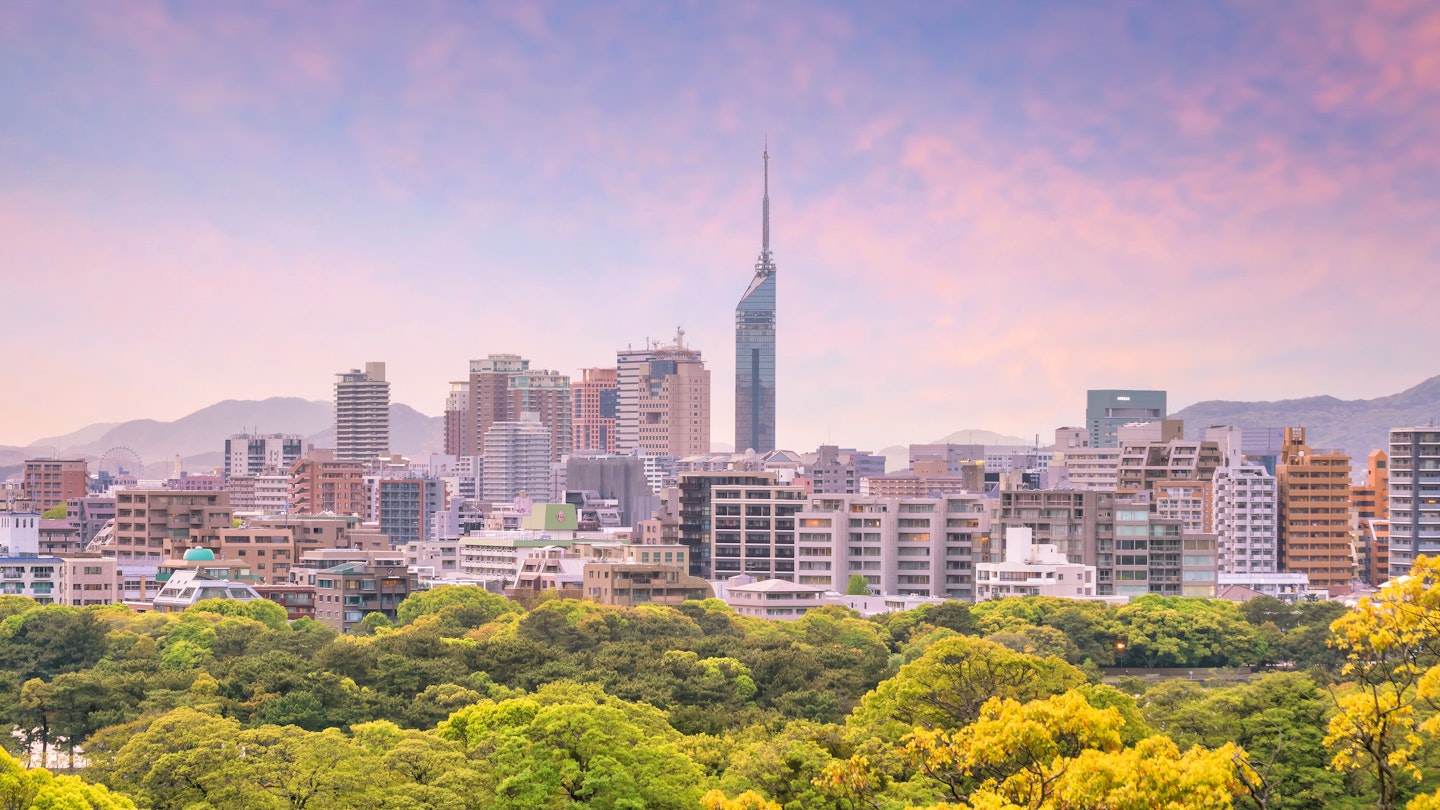Sprawled along the coast at the tip of northern Kyūshū lies Fukuoka Prefecture. Part sun-soaked nature retreat, part multicultural metropolis, it has a lot to offer visitors seeking unique experiences. Fukuoka city boasts culture, diversity, and world-class cuisine, while the wider area features silent and serene landscapes. Here are some top reasons to visit the prefecture.
The gateway to Asia
Fukuoka city is made up of two former settlements: the castle town of the same name on the west bank of the Naka-gawa (Naka River), and Hakata, a trading town on the east bank. In 1889, the two towns merged as Fukuoka and, thanks to its prime geographical location with access to the ocean below the Korean Peninsula and a river leading south towards the inland, the area quickly became a bustling trading post. Today, the prefecture still features famous sites with historical and cultural attractions across various areas.
Seaside scenes
Fukuoka city enjoys a reputation as a friendly, sunny destination, bolstered significantly by its coastal location. Shikanoshima is a pleasant, rural island connected to the mainland via one road, offering an array of seafood restaurants along the bustling streets by the harbour. Ferries leave on the hour (¥680, 30 minutes) from Bayside Place, and sightseeing cruises are available around Hakata Bay. Shikanoshima also features a fishing shrine adorned with deer antlers and possesses a picturesque beach approximately 5km east of it. Additionally, visitors can explore Nokonoshima Island Park, just across the bay from the mainland, a small escape from urban life famed for its hills blanketed with sunflowers in the summer and cosmos flowers in the fall.
Slightly inland from the coast is the expansive, 398 sq km Ōhori-kōen, a park featuring the remaining walls of the former Fukuoka Castle, a wildlife forest, children’s amusement park, and a traditional Japanese garden that includes a waterfall and a tea house. Other charming coastal destinations include Kitakyushu, the island’s northernmost city known for spring cherry blossoms, Kokura Castle, and the stunning Kawachi Wisteria Garden, along with Itoshima, a resort town on the picturesque Futamigaura Bay, where the sun sets over two rocky crags known as Meoto Iwa, or Married Couple Rocks.
Cultural and natural charms
One of Fukuoka’s most famous tourist attractions is Dazaifu Tenman-gū. Dedicated to the spirit of Sugawara no Michizane, a Heian Period politician, poet, and academic who faced demotion, this large Shintō shrine is renowned as one of the most significant of its kind in Japan. Visitors pass through a torii (shrine gate) and onto a pond designed in the shape of the Japanese character for ‘heart’. Plum trees flourish across the site, including the particularly famous one known as ‘the flying plum tree,’ reputed to be the first to blossom annually and, according to legend, flew from Sugawara no Michizane’s home to be with him in his hour of need.
Fukuoka Prefecture is also rich in nature; the area is surrounded on three sides by the sea and located close to beautiful mountains. Hiking and water sports are especially popular. In the centre of the prefecture, the Akizuki Castle Ruins provide a rustic historical site, particularly stunning in autumn due to the vibrant colors of the forest foliage. Further north, nature enthusiasts can explore Hiraodai with a pleasant walk on an elevated plateau scattered with white limestone rocks over green meadows. Below ground, limestone caves such as Senbutsu Shonyudo, the most famous, offer a chance for exploration.
In the city, the folk museum of Hakata Machiya Furusato-kan, spread across three traditional Japanese townhouses, showcases recreations of late Meiji era neighborhood units alongside live demonstrations of Hakata culture led by local craftspeople.
Mouth-watering dishes
No visit to Fukuoka is complete without trying Hakata ramen, a legendary culinary delight consisting of a rich, milky tonkotsu (pork-bone broth) paired with thin, straight noodles. Toppings may include shredded green onions, pickled ginger, a semi-soft boiled egg, and garlic. Diners can often choose their preferred noodle texture, and regional varieties of ramen can be found throughout Japan. However, Hakata ramen has surged in popularity, with the famous Ichiran chain originating in Fukuoka. Additionally, Ramen Stadium features a floor dedicated to various ramen outlets, offering an assortment for curious travelers.
Fukuoka Prefecture is home to Japan’s second-largest fig-growing area, with the renowned toyomitsuhime figs celebrated for their sweetness. Other local delicacies include the prefecture’s kiwis, strawberries, unagi (freshwater eel), and Yamecha green tea. The city’s vibrant open-air food stalls (yatai) are a must-try, particularly at the south end of Nakasu Island, where about 20 stalls line the waterfront offering diverse regional delicacies. Tanga Ichiba market in Kitakyushu also provides an opportunity to savor fresh local ingredients.
Getting there
Fukuoka Prefecture is nearly equidistant from Tokyo and Shanghai, with convenient connections to Seoul and Taipei, making one-day return trips feasible. Fukuoka Airport operates over 800 flights weekly to Asia and 23 other global cities, while Kitakyushu Airport services routes to Seoul, Busan, Dalian, and more. High-speed passenger ships connect Fukuoka and Busan in under three hours, complemented by over 50 daily flights between Tokyo and Fukuoka Airport. More environmentally-friendly options exist, such as the high-speed Shinkansen, which connects Fukuoka to Tokyo in approximately five hours.
Produced by iBestTravel for Fukuoka Tourism. All editorial views are those of iBestTravel alone and reflect our policy of editorial independence and impartiality.




